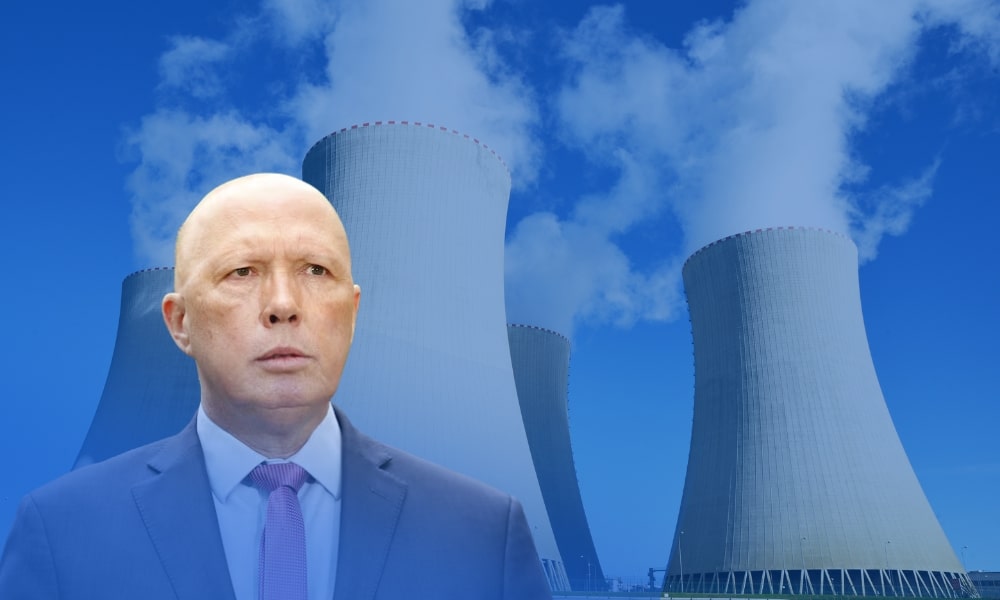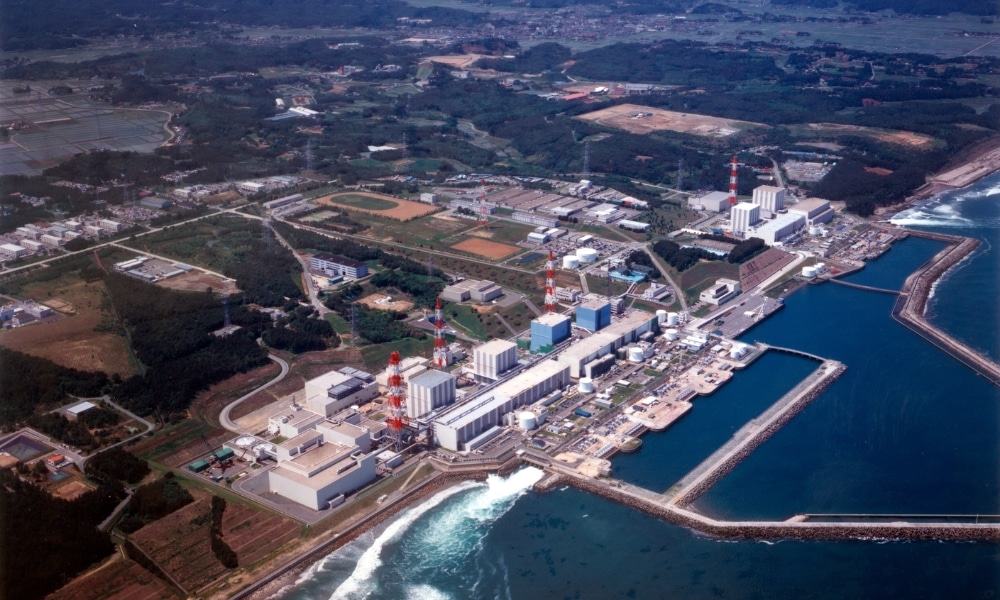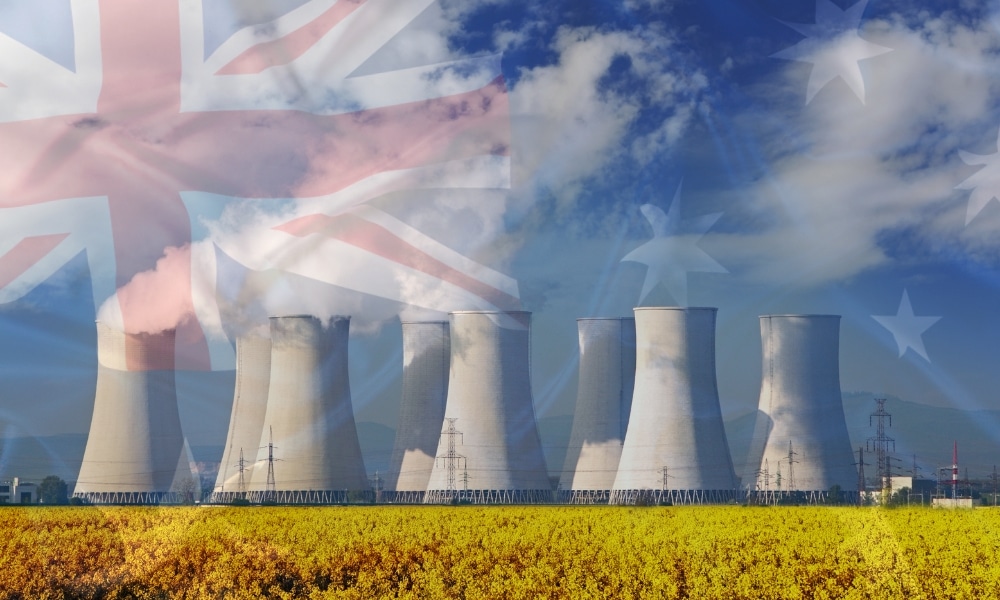The next federal election will be a huge turning point for Australia’s energy future – no matter the outcome. On the table from the Opposition is nuclear energy. With a plan to construct seven nuclear power plants across Australia, Aussies are rightfully curious as to what this might mean for them and their future. Is nuclear power a viable option for our country or should we forge ahead with the government’s plans for renewables?
Peter Dutton’s plans to go nuclear
Aussies know when a federal election is looming: promises are thrown on the table. As outlandish as some promises may be, the Opposition appears to be very serious about nuclear energy. It’s a topic that has been ruminated by many for decades. We’ve seen successes across Europe and the US, but also some disasters. The very idea seems quite alluring; boundless, emission-free energy from an element in great supply. But we know that when things go bad, they can truly go bad. The Chernobyl disaster is a cautionary tale.
Peter Dutton and the Opposition laid out their plans on the 19th of June. With seven locations proposed, the aim is to have two of the reactors in full operation by 2035 – 2037, with the remaining to follow. The proposed locations are:
- Liddell Power Station, New South Wales
- Mount Piper Power Station, New South Wales
- Loy Yang Power Stations, Victoria
- Tarong Power Station, Queensland
- Callide Power Station, Queensland
- Northern Power Station, South Australia*
- Muja Power Station, Western Australia*
*Small modular reactors
No projected costs have been released by the Opposition, citing a lack of access to advanced modelling. However, some economists have estimated the cost to Aussie taxpayers as $100 billion. Estimates released by the Smart Energy Council see the taxpayer footing a $116-$600 billion bill.
The plan utilises existing infrastructure, such as power lines and cooling-water infrastructure, in each location. This means that the plants should be able to deliver power sooner.
What percentage of Australia’s energy could nuclear power provide?
The Smart Energy Council (SEC) have stated that they expect nuclear energy to make up only 3.7% of Australia’s energy mix by 2050. The detailed analysis from the SEC estimates that ‘The large nuclear reactors are likely to have a capacity of around 2 gigawatts each and the ‘small’ reactors are likely to have a capacity of 470 megawatts each.’
The same analysis used statistics and figures from existing structures. ‘It is assumed that nuclear plants operate at the same capacity factor as coal plants in 2024, around 60%.’

Should the analysis be correct, this would put nuclear energy in a dire position as an answer to Australia’s energy crisis. The SEC made it clear that the same investment of $116 billion would see Australia achieve an 82% energy mix of renewables by 2030 or 100% by 2050.
John Grimes, Chief Executive of the Smart Energy Council, said: “At best, Peter Dutton’s nuclear proposal would deliver 3.7% of the energy required at the same cost as the Government’s comprehensive strategy. In reality, current cost overruns happening right now in the UK could mean a $600 billion bill to Australian taxpayers, whilst delivering a small proportion of the energy that is actually required.”
Further to this, the Opposition has made it clear that gas will be the supporting energy source rather than renewables. Increasing gas power production will add further emissions burden to our country. Could this send our country back years in our goal of net-zero emissions?

Is nuclear energy a viable option for Australia?
Before any ground is broken, or radioactive material is used to power Aussie homes, laws must first be changed. Going nuclear in Australia is not a simple task with two federal laws prohibiting its use. The Australian Radiation Protection and Nuclear Safety Act 1998 (ARPANS Act) and the Environment Protection and Biodiversity Conservation Act 1999 (EPBC Act) would first need to be amended. NSW, VIC, and QLD also have laws prohibiting nuclear power plants. The amendment of these laws could take years.
We should look at successful nuclear programs to see how they function.
European Union nuclear energy
The European Union (EU) has 100 operational nuclear power plants across 12 of its member states. These plants provide the EU with approximately 25% of its energy with a capacity of 97 GWe. It also makes up 40% of its carbon-free electricity, with wind and solar accounting for the rest.
Japan’s nuclear power
Japan has had a successful nuclear program for decades, with 33 currently operational plants providing 31,679 MWe of energy to the grid. This accounts for approximately 20% of Japan’s energy mix. The 2011 Fukushima nuclear accident, caused by a Tsunami, altered the public’s perception of nuclear energy. While there have been public calls to abandon nuclear energy, the government has forged ahead with reopenings of plants and plans to expand into the future.

Nuclear power in the United States of America
The largest producer of nuclear power is the USA. With 94 power plants in operation, pumping out 772 TWh (2022) into the grid, nuclear provides only 20% of the country’s power. Nuclear energy does makeup 55% of the nation’s carbon-free electricity – with solar and wind accounting for the rest.
While nuclear energy is certainly a plausible option for Australia, there are many factors to consider:
- What percentage of Australia’s energy mix will nuclear account for?
- How safe will the plants be? What impact will they have on their immediate environments?
- What capacity will the reactors operate at?
- What will the ongoing maintenance costs be?
- Will the plants provide the energy Australia needs in the timeframe it needs it?
Are solar and wind the answer Australia needs?
Other than fossil fuels, the alternative to nuclear energy is solar and wind energy. This is the solution supported by the current government and one that has been in the works for years.
Let’s look at large-scale wind and solar:
- Unlike nuclear energy, wind and solar have no potential for fallout.
- No ‘waste’ needs to be stored. Solar and wind produce no emissions nor any materials or substances.
- Both are scaleable and adaptable to the terrain.
- The required investment in solar and wind is comparatively much smaller.
- Solar and wind can be operational in a matter of months.
- End-of-life requires minimal decommissioning and the materials are mostly recyclable (90% for wind and 95% for solar).
- No personnel are required to ‘run’ solar or wind farms. Minimal ongoing maintenance is required.
One of the greatest advantages of solar, and even wind technology, is that it can be installed on your home or business. Running a mini-nuclear power plant is not an option but you can power your home with solar. This means that you can rely less on the grid, or even be completely self-sufficient when coupled with battery storage. Solar technology allows the average Aussie to take control of their own energy needs. With solar panel warranties extending up to 40 years for many manufacturers, you can take control of your usage not just for a few years but potentially for a lifetime!

What should Australians choose?
The upcoming election might just be a vote for or against nuclear energy. When looking at Europe, Japan, and the USA, nuclear energy certainly has its merits. Many factors should have each Australian questioning its validity. Some questions you may wish to consider:
- Will nuclear provide me and future generations with energy security?
- What will the impact be on my energy bills in the short and long term?
- Would I feel safe living in proximity to a nuclear power plant?
- How much debt should Australia take on to invest in this technology?
The question really falls to you – what do you think Australia should be investing in?
While we wait to see how Australia votes, you can take matters into your own hands and take control of your own energy usage. Solar is affordable, and with payment plans, financing, green loans, and other incentives available, you can protect your home from future electricity price rises. Get FREE quotes today for solar, battery storage, and much more. Energy independence has never been easier.














































